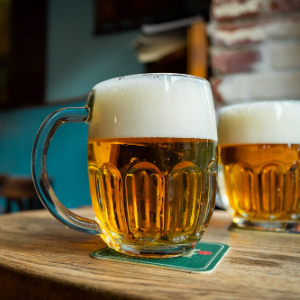Like it or not, light beer is here to stay. Personally, I’ve never been a fan of anything light, be it food or drink because it usually sacrifices flavour and, after all, isn’t that why we eat and drink nice things? Personal gripes aside, light beer (or lite beer, as it’s often called) has morphed from just Castle Lite to emulate the American light beer boom, transforming into a gigantic market. Most of the big players now have a light variant and it was only a matter of time before craft beer went light.
New light lagers
This year alone we’ve seen the launch of light lagers from Striped Horse, Noon Gun, Chester’s Lager, Devil’s Peak and Cape Brewing Company. These beers join Citizen, Darling Brew and Little Wolf to create a substantial light craft beer category. It’s an understandable move from the brewers because we’re a lager country and light lager is booming. Many craft purists will tell you that it flies in the face of everything that craft stands for. Hell, I’d be inclined to agree with them, but in a struggling economy, it just makes good business sense to have a light line in the water.
So what makes a light beer light?
The rule of thumb is fewer calories and lower alcohol – this is achieved by adjusting the brewing process. By either extending the mashing process (steeping of malted barley) or adding an enzyme, most of the carbohydrates are broken down into sugars. The sugars are fermented by the yeast, which produces alcohol and carbon dioxide. Then the beer is diluted with water to get it to the correct alcohol percentage.
The spelling of ‘lite’ originated in America during the 70s, and the term stuck after Miller spent millions on advertising to push their lite beer. Light lagers typically have about 90 to 100 calories per bottle, while lagers normally push above 140 calories per bottle. One could argue that it’s not a huge difference, but if you’re trying to be better then every calorie counts. Light lagers also have very little body to them, which makes for a lighter drinking experience. This lighter experience is the reason given most often when someone explains why they drink light beer.
So where does this leave the South African craft beer market?
Well, if you’d told me a year ago that we’d have a burgeoning category of light beers, I would’ve laughed at you, but here we are. It irks the craft purist in me, but the sensible side of me says that the market needs to grow if it’s going to survive. The light craft beers are good, but in a style where minimal flavour is expected, will consumers want to pay extra when we already have so many big beer alternatives?
With anything beer-related, the best way to form an educated opinion is to grab a bunch of mates and beers and drink them side by side in a blind tasting. A light lager tasting is one of the hardest because the flavours are so subtle, with nowhere to hide. I guarantee you’ll be surprised by which beer you like best, because most of the time it’s not the one you regularly drink.
If you’re interested in hearing how all the new light craft beers stack up against the big boys, check out the #BeerTime Podcast on Lite Lagers.
ALSO SEE… Women in Beer: Meet South Africa’s First Black Brewmaster

